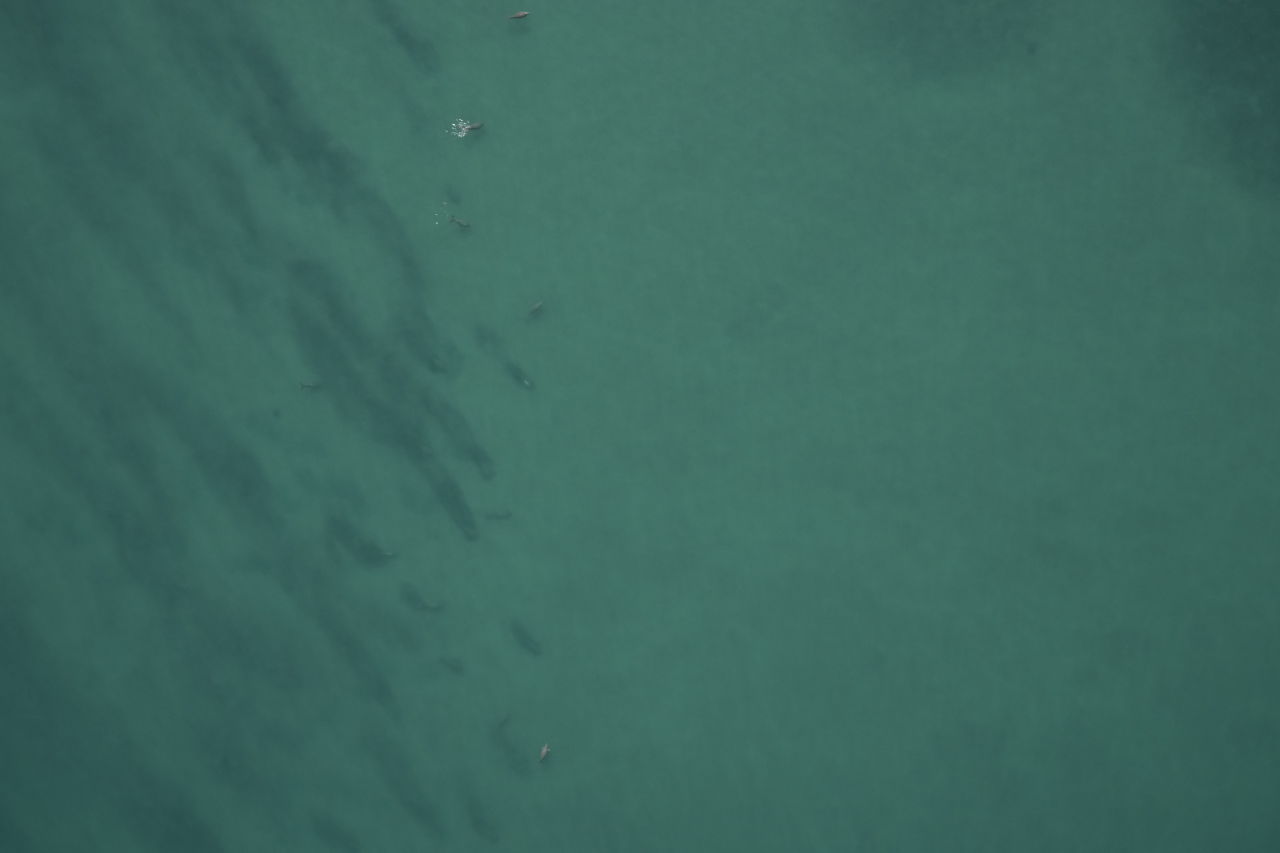The Great Barrier Reef Foundation is proud to highlight the findings of a new report revealing a thriving dugong population in far northern Queensland. This significant discovery offers hope for the future of these iconic marine mammals and underscores the importance of continued conservation efforts.
The report conducted by our partners James Cook University's (JCU) TropWATER team, shows that the far northern region, stretching from Cape York to Mission Beach, is home to approximately 7,000 dugongs. This number is nearly double that of the central and southern Great Barrier Reef, where dugong populations have shown concerning declines.
The Great Barrier Reef Foundation's Integrated Monitoring and Reporting Director Charlie Morgan emphasised the significance of these findings. "The Great Barrier Reef supports one of the world's largest dugong populations. This landmark dugong census has been instrumental in advancing our understanding of dugong populations across the entire Great Barrier Reef."

The data gathered from aerial surveys provide insights into dugong abundance and distribution. Credit: James Cook University.
The aerial surveys, which have been conducted every five years over the last 30 years, play a crucial role in monitoring dugong populations along Queensland's coast. The data gathered from these surveys provide insights into dugong abundance and distribution, allowing for more informed conservation and management decisions for this species which plays a critical role in the marine ecosystem.
Lead dugong researcher, JCU TropWATER's Dr. Chris Cleguer, expressed optimism about the far northern population's health. "Our results show dugong populations in the far north are thriving overall. This is great news, and we hope this trend will continue in future monitoring surveys."
However, the contrast between the thriving population in the far north and the declining numbers in the southern Great Barrier Reef highlights the urgent need for targeted conservation efforts. Dr. Cleguer noted, "This trend is notably different from what we observed in our last surveys in central Queensland and the southern section of the Great Barrier Reef - especially the concerning numbers from the Whitsundays to Bundaberg."
The report identified consistent dugong abundance hotspots north of Cape Flattery and Cape Melville, as well as in sheltered bays like Lloyd Bay, Temple Bay, and Shelburne Bay. Despite these positive trends, the need for further research into seagrass health, the primary food source for dugongs, remains critical. "We know healthy seagrass meadows are essential for dugong survival," Dr. Cleguer explained. "It is their main food source with these sea cows eating around 40 kilograms of seagrass daily, depending on their body size."

Aerial surveys play a crucial role in monitoring dugong populations along Queensland's coast. Credit: James Cook University.
The Great Barrier Reef Foundation's involvement in this project underscores its commitment to protecting the Reef's marine life. Charlie Morgan highlighted the broader implications of the research, stating, "The data collected from this project and our other comprehensive monitoring programs for reef fish, sea cucumbers, inshore dolphins, and seabirds will inform critical conservation efforts and management decisions to help protect these iconic species from the growing impacts of climate change."
As climate change continues to pose a significant threat to marine ecosystems, the Foundation remains dedicated to pioneering solutions that safeguard the Great Barrier Reef and its inhabitants.
This project is jointly funded by the partnership between the Australian Government's Reef Trust and the Great Barrier Reef Foundation, the Department of Climate Change, Energy, the Environment and the Australian Government under the National Environmental Science Program.






